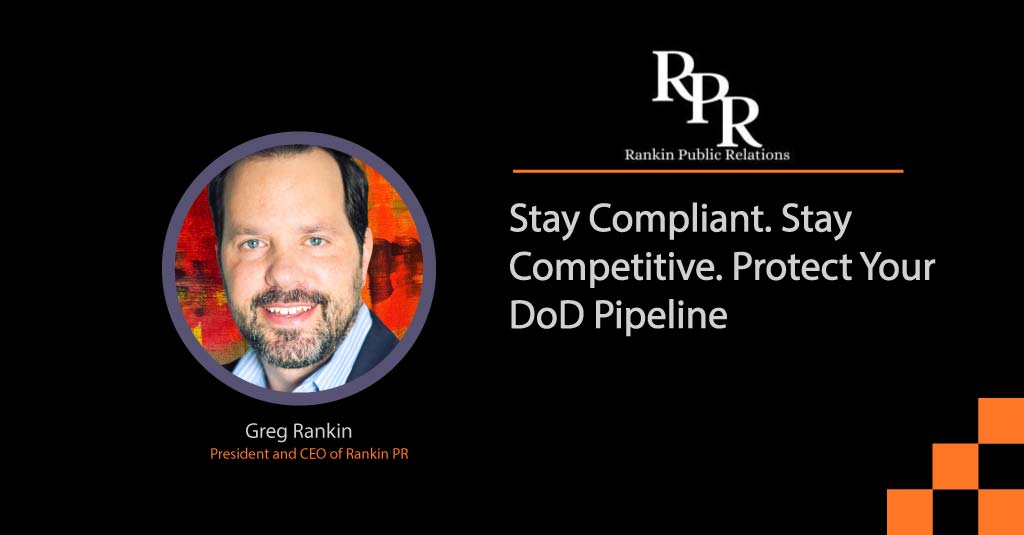With phased enforcement commencing, contractors face a tightening timeline to prove compliance. Those who mobilize early will stay ahead of deadlines and avoid potential bottlenecks.
For many defense contractors, the path to cybersecurity compliance has been clouded by shifting deadlines and evolving requirements. Now, as stricter rules will begin appearing in Department of Defense (DoD) contracts, uncertainty has turned into urgency. Primes are tightening oversight, subcontractors are scrambling to verify readiness, and companies that misstep risk losing not just future bids, but the very contracts that sustain their business.
With the Title 48 rule, effective November 10, 2025, now reshaping how the DoD must allocate awards, defense contractors and subcontractors must expect to prove they meet strict Cybersecurity Maturity Model Certification (CMMC) standards. Those who delay risk losing valuable contracts and getting caught in a growing certification bottleneck.
“The reality is, this goes way beyond IT,” says Charlie Sciuto, CISO and CTO for SSE, an information technology (IT) and cybersecurity defense contractor based in St. Louis. “CMMC is about policy, procedure, personnel, and even physical security. It’s an organizational state of compliance that companies need to be able to demonstrate fully.”
Recommended CyberTech Insights: Shai-Hulud: Defending Against the Latest NPM Supply Chain Attack
A rollout with high stakes
CMMC is being implemented through a phased rollout under Title 48. It builds on NIST SP 800-171, but the final rule adds stricter verification measures and formal accountability.
The Title 32 CMMC Program plan provides for rollout in four phases, each with increasing impact:
- Phase One – Initial Enforcement (Nov. 2025): All new DoD contracts to require a valid self-assessment score in the Supplier Performance Risk System (SPRS). Contracts may not be awarded if the score is below the threshold. For Level 2, that means meeting a minimum score of 88 out of 110.
- Phase Two – Select Contract Certifications (Nov. 2026): Certification audits by a Certified Third-Party Assessment Organization (C3PAO) are to be required for “select” new contracts. Exactly which programs will be selected is uncertain. However, DoD program officers have discretion to require certification both earlier than the phase two starting line and during this phase —a situation Sciuto and others describe as “Russian roulette.”
- Phase Three – Expanding to Options and Renewals (Nov. 2027): Certification requirements extend to option periods, drawing previously “safe” long-term agreements into compliance. Level 3 audits, led directly by DoD, begin for contracts with the most sensitive data.
- Phase Four – Full Enforcement (Nov. 2028): Excepting only commercial off the shelf (COTS) procurements, all DoD solicitations and contracts will include applicable CMMC certification requirements as a condition of award.
While these phases suggest a gradual path, many companies will feel the impact much sooner, and when prime contractors are selected, flow downs are mandatory.
“Title 48 gives program officers the complete and unrestricted freedom to implement C3PAO certification at any time they choose during the rollout,” notes Sciuto. “A contracting officer could start prescribing CMMC requirements to programs in early 2026 rather than waiting, and if you aren’t ready, you could be excluded.”
Why early action matters
The challenge of getting the entire Defense Industrial Base (DIB) through the CMMC process is staggering. There are roughly 300,000 companies in the DIB, with an estimated 80,000 needing Level 2 certification. Yet experts estimate fewer than 2% are currently certified.
Adding to the challenge is the limited number of accredited assessors. Fewer than 100 C3PAOs are currently available to audit contractors. With tens of thousands of companies chasing certification, the bottleneck could be severe.
“This is like a thousand-lane highway suddenly merging down to ten lanes,” adds Sciuto. “Companies that wait will find themselves in a traffic jam with no way to get certified in time for an award.”
The risks go far beyond scheduling delays. According to SSE, Primes are already pressing subcontractors to demonstrate progress, sometimes color-coding suppliers (e.g., green, yellow, red) based on SPRS scores or restricting the way CUI is shared until compliance improves. Some have begun withholding purchase orders (POs) from subs that cannot provide evidence of readiness.
“For companies that rely heavily on DoD work, these risks are existential,” Sciuto adds. “A lot of them depend on those contracts with Primes as the lifeblood of their business. Mess that up, you could find yourself closing shop.”
Recommended CyberTech Insights: ClayRat and the Next Wave of Mobile Threats
The financial stakes
Falsifying compliance carries significant financial consequences. Under the False Claims Act, damages alone can reach up to three times the value of a contract if a company misrepresents its status. However, the more immediate danger is lost revenue.
“You may be working on a program and expecting a new task order in 2026,” Sciuto explains. “If you’re not prepared to submit a compliant self-assessment, your prime may tell you, ‘Sorry, you can’t participate.’ That’s revenue you were counting on, and now it’s gone overnight. It’s not just about penalties and damages; it’s about being out of the game.”
Sciuto often poses a blunt question to clients: What percentage of your revenue is tied to DoD contracts, and can you afford to lose it? For many, the answer underscores just how critical early compliance is.
Finding the gaps
For organizations unsure of where they stand, the first step is a gap assessment. This process identifies strengths and weaknesses relative to CMMC requirements and provides a roadmap to remediation before a formal audit.
To help with gap assessments, companies can partner with a Registered Provider Organization (RPO), a designation established by the DoD to help companies prepare for CMMC. RPOs are accredited by the Cyber AB and may also provide services like remediation, policy development, and continuous monitoring.
Sciuto stresses the importance of choosing experienced partners.
“Get a gap assessment from someone who’s been through and passed the certification process themselves,” he explains. “It’s a very different conversation when you’re talking to someone who can say, ‘Here’s exactly what an auditor will expect to see.’”
Gap assessments typically take about four weeks, with remediation projects often requiring two to three months depending on the maturity of a company’s IT environment. Sciuto estimates total time to compliance can range from three to six months for mature organizations, and up to nine months for less mature environments.
That’s why waiting is risky. By the time Phase 2 audits begin, companies still closing remediation items will struggle to find assessors able and willing to work with them.
“C3PAOs are going to focus on companies that are ready,” Sciuto says. “If you’re not, they’ll move on to the next one in line.”
Recommended CyberTech Insights: The New Playbook for Building Regulatory and Storage Layer Resilience to Lower Risk and Optimize Business Uptime and Success
An organizational approach
While every company’s path will differ, here are several universal steps:
- Assess readiness: Conduct a gap assessment and enter an updated self-assessment score into SPRS.
- Close gaps early: Prioritize policy and process documentation, which is often the longest and most difficult remediation step.
- Verify providers: Ensure any external partners are credentialed and able to support their shared responsibility matrices.
- Engage assessors early: Companies targeting certification in Phase 2 should be contacting C3PAOs by Q2 of 2026 to understand the timing of securing a place in line.
- Expand internal ownership: Make CMMC compliance an organizational priority, not just an IT project.
CMMC enforcement is no longer theoretical, it’s redefining how the defense industry operates. Contractors who act decisively will control their future; those who delay risk being overtaken by deadlines and competitors. Ultimately, success depends on preparation, discipline, and trusted partners.
As Stacy Bostjanick, Chief Defense Industrial Base Cybersecurity for the DoD CIO, recently put it:
“Those who knowingly provide deficient cybersecurity products or services, misrepresent their cybersecurity practices or protocols, or violate obligations to monitor and report cybersecurity incidents and breaches must be held accountable. Enforcement efforts like this should serve as a reminder to industry to prioritize DoD cybersecurity compliance.”
Her warning makes the stakes clear: compliance is a matter of readiness, accountability, and survival in the modern defense supply chain.
Recommended CyberTech Insights: C-Suite Support Powers Smarter, Stronger Network Security Strategies
To participate in our interviews, please write to our CyberTech Media Room at info@intentamplify.com







